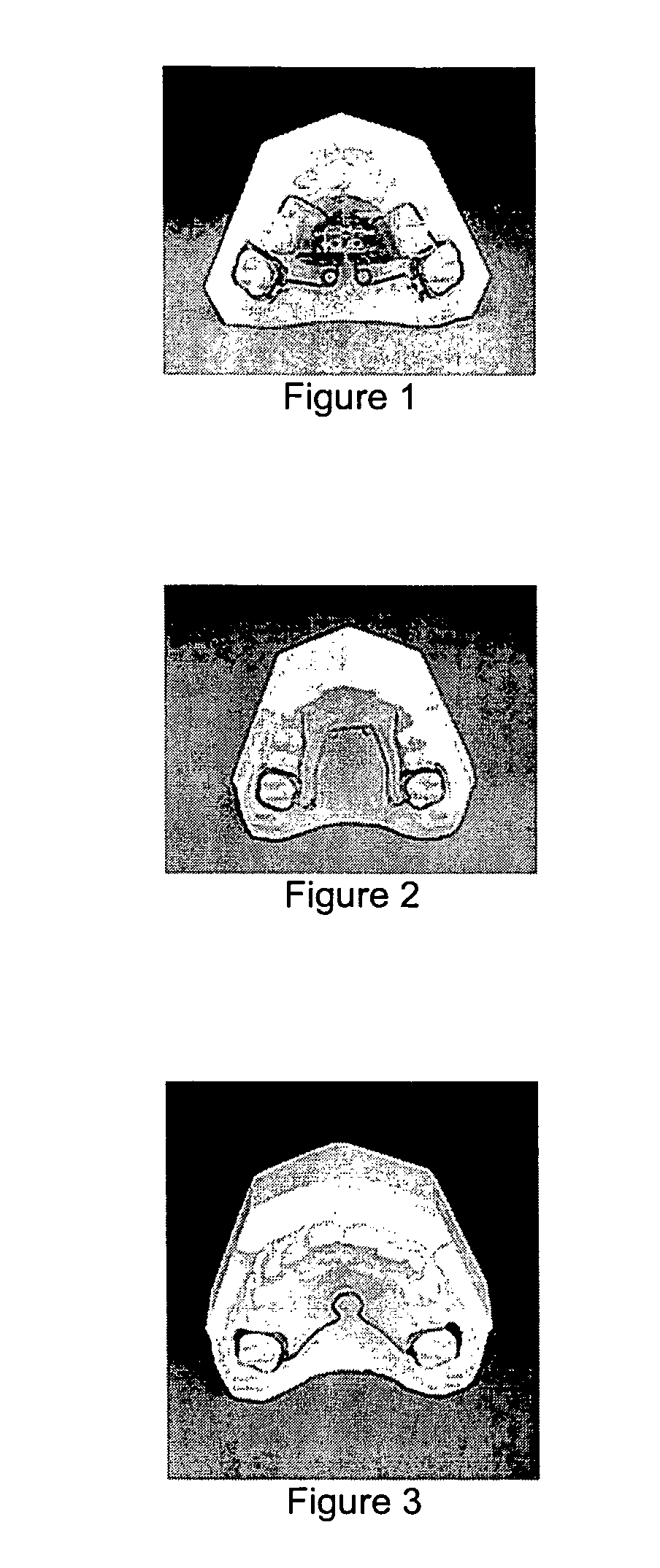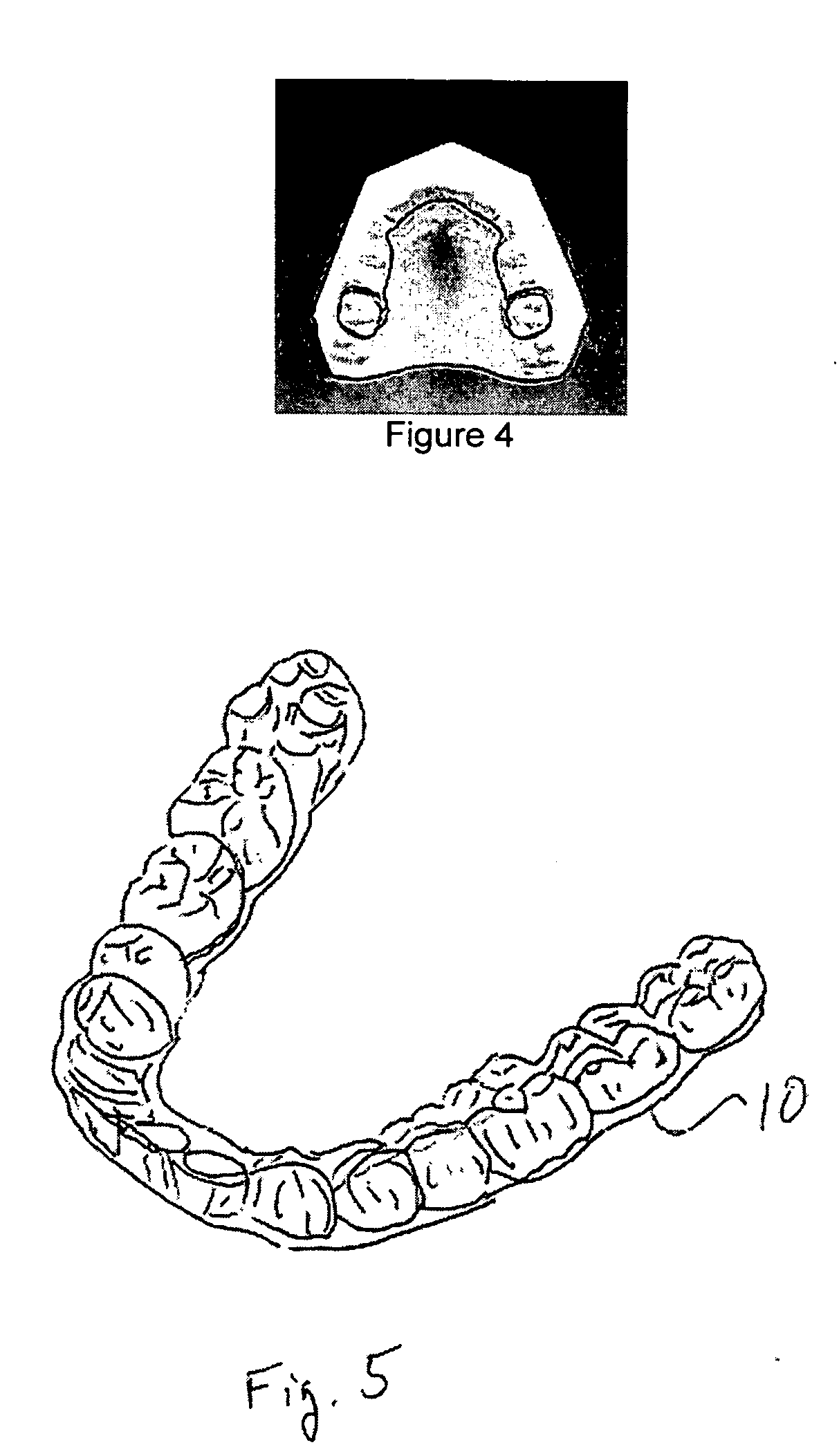Two-phase invisible orthodontics
a technology of invisible orthodontics and two phases, applied in the field of invisible orthodontics, can solve the problems of frequent reactivation, high labor intensity, and high cost of the practitioner, and achieve the effect of improving treatmen
- Summary
- Abstract
- Description
- Claims
- Application Information
AI Technical Summary
Benefits of technology
Problems solved by technology
Method used
Image
Examples
Embodiment Construction
[0018] Since it is virtually impossible to see molars at the back of the mouth, more traditional appliances can be used to manipulate the molars gaining more space for the anterior teeth. Professionals may use lip bumpers, Crozats, palatal bars, Herbst, Distal Jets, expansion screws, Molar Movers, and other molar management appliances known to practitioners as are variously shown in FIGS. 1-4. This will generally recover, just through rotations and uprighting, the space for at least one anterior tooth in each arch. This will generate adequate space in the anteriors for correction and provide good anchorage for anterior movement. Further space, if needed, can be gained by judiciously stripping of teeth no more than 0.5 mm per side. The goal is to clear a path for the teeth to straighten without impediment. It is estimated that Phase I will last 2-6 months. Records will be kept of the individual tooth and arch width measurements before the stripping and after. Again, digital 3-D simul...
PUM
 Login to View More
Login to View More Abstract
Description
Claims
Application Information
 Login to View More
Login to View More - R&D
- Intellectual Property
- Life Sciences
- Materials
- Tech Scout
- Unparalleled Data Quality
- Higher Quality Content
- 60% Fewer Hallucinations
Browse by: Latest US Patents, China's latest patents, Technical Efficacy Thesaurus, Application Domain, Technology Topic, Popular Technical Reports.
© 2025 PatSnap. All rights reserved.Legal|Privacy policy|Modern Slavery Act Transparency Statement|Sitemap|About US| Contact US: help@patsnap.com


